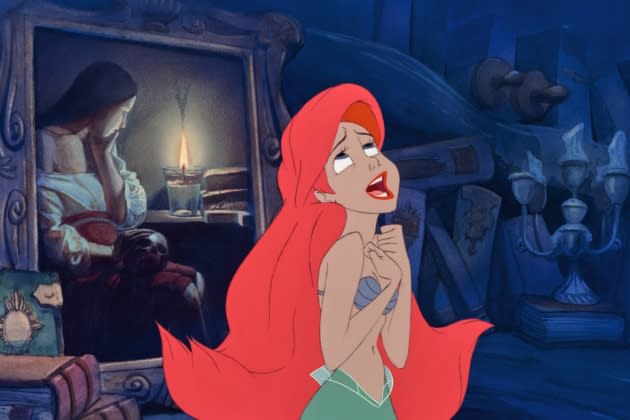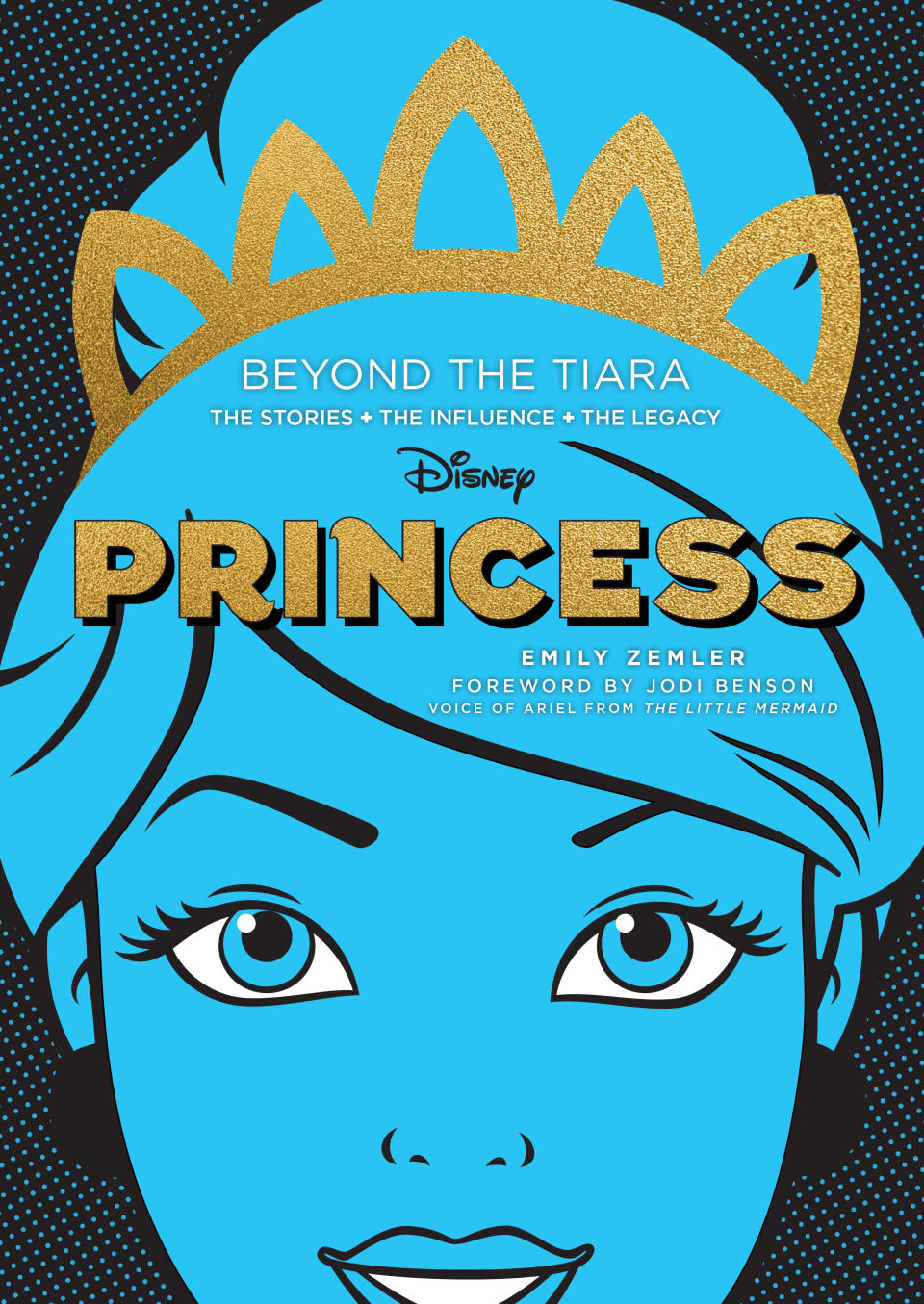Music Is Key to Storytelling in ‘Disney Princess: Beyond the Tiara’ Excerpt
- Oops!Something went wrong.Please try again later.
- Oops!Something went wrong.Please try again later.
- Oops!Something went wrong.Please try again later.
- Oops!Something went wrong.Please try again later.

In Disney Princess: Beyond the Tiara, longtime Rolling Stone contributor Emily Zemler takes a deep dive into how various beloved princesses became the cultural icons they are today, from Snow White’s lasting reign to newer, inspiring royalty like Moana.
The book weaves interviews with historians and those who helped shape the characters, including directors and voice talent, alongside concept art and memorabilia, and breaks down important themes integral to how the princesses serve as inspirations.
More from Rolling Stone
Halle Bailey Reflects on Bringing 'the Essence of Me' to Ariel in Live-Action 'The Little Mermaid'
Racists Are Worried About the Historical Accuracy of Mermaids
Music, of course, is a key element to the storytelling and what makes the characters resonate for decades, as the excerpt below details. The book explores Disney’s first original music hit, “Who’s Afraid of the Big Bad Wolf?” from Three Little Pigs to “Someday My Prince Will Come” from Snow White and the Seven Dwarfs on through The Little Mermaid award-winning hits “Under the Sea” and “Kiss the Girl” and other classics. In this exclusive excerpt from the book, out today, Zemler Zemler delves into the influential music and the people who created it.
MUSIC AND ANIMATION
Before Walt ventured into feature-length animation with Snow White and the Seven Dwarfs, Disney’s original music numbers were created by sheer necessity. The studio didn’t have a library of songs to draw from like other film studios, so many of Walt Disney’s early animated works used classical music or songs available in the public domain. The studio’s first original musical hit, “Who’s Afraid of the Big Bad Wolf?,” was written by Disney Legend Frank Churchill for the animated short Three Little Pigs in 1933. The song was a massive success at the time (and has since been performed by everyone from Duke Ellington to Barbra Streisand to LL Cool J), proving that audiences were as compelled by the music as they were by the animation.
As Walt was developing Snow White, he knew the story would be best presented as an animated musical feature. “I don’t think there was ever any doubt in Walt’s mind about making Snow White and the Seven Dwarfs as a musical,” says Disney music historian Greg Ehrbar. “There were too many advantages to enhancing the storytelling, capturing the audience’s emotions, and carrying the popularity of the film beyond the theater.” Like many of Disney’s animated features, Snow White’s music reflected what musical styles were popular at the time, and that included the operetta. Most operettas in the 1930s were based on fairy tales, and the songs for Snow White, written by Frank Churchill and Larry Morey, embraced that aesthetic. Walt himself gave final approval over the musical numbers. In fact, it was Walt’s idea for the film to contain a song called “Some Day My Prince Will Come,” which voice actress Adriana Caselotti sang.
“One of Walt’s suggestions in one of his early outlines for the movie was he thought that there really should be a song called ‘Some Day My Prince Will Come,’” explains J.B. Kaufman, author of The Fairest One of All: The Making of Walt Disney’s Snow White. “So, of course, Churchill obliged. He came up with this melody,which ended up being a great song and an important part of the score, to this day.”
But while the song-driven format of Snow White feels familiar to viewers today, in 1937 making an animated musical was an unusual endeavor. Each song fit the story inextricably, like in a popular stage musical, and Walt recognized the potential of the songs to act as promotional jingles for the movie. The songs were carried out of the theater with the viewer after the credits rolled, easy to hum or sing in one’s head. “It was that little piece of the film that you could relive and it was yours,” Thornton notes. “The music was the one thing you were able to take away instantly.”
The recorded music of Snow White and the Seven Dwarfs was released as the first commercially available film soundtrack in 1938 via RCA Victor. The eleven-track collection, titled Songs from Walt Disney’s Snow White and the Seven Dwarfs (with the Same Characters and Sound Effects as in the Film of That Title) and featured on three 78rpm singles sold in a package. It was extremely popular, with the songs played regularly on the radio. It was no wonder the film was nominated for Best Musical Score at the Academy Awards later that year. Back then, there was also no such thing as home video, so soundtracks were the best way for fans to relive their favorite film moments at home.
“The impact of the score of Snow White is not be underestimated,” says historian Stacia Martin. “Those songs were massive, and not thought of as children’s music. Those were Top 40 hit parade songs that everybody loved.”

As Walt continued making animated features, he stuck with the tried-and-true musical format. He was so determined to get the music of Cinderella (1950) right, he enlisted Tin Pan Alley songwriters Mack David, Al Hoffman, and Jerry Livingston to pen the songs, including “Bibbidi-Bobbidi-Boo.” Voice actress Ilene Woods performed “A Dream is a Wish Your Heart Makes,” evoking Disney’s earlier hit “When You Wish Upon a Star” from Pinocchio (1940). Sleeping Beauty (1959), released nearly a decade after Cinderella, had a more classical tone, with George Bruns’s score inspired by Peter Tchaikovsky’s Sleeping Beauty Ballet. Its most iconic song was “Once Upon a Dream,” sung by voice actress Mary Costa.
It was the era known as the “Disney Renaissance,” however, that really solidified Disney’s connection to the Broadway musical structure. Lyricist Howard Ashman and composer Alan Menken had success on Broadway with Little Shop of Horrors in the early 1980s, and were brought in during the production of The Little Mermaid to write the music. That collaboration ended up being transformative. Ashman and Menken were responsible for the film’s award winning hits, including “Under the Sea” and “Kiss the Girl,” and went on to craft the songs for Beauty and the Beast and Aladdin. The two brought both a whimsy and a sense of emotional gravity to the songs, which captivated audiences. It was an interesting moment in pop culture, when animated musicals dominated the screens but actual stage musicals were much less popular.
“Homegrown American musicals were really not doing all that well in the ’80s,” explains charts expert Chris Molanphy. “The ’90s weren’t much better. Live humans breaking into song was, for about a twenty-year period, considered sort of uncool. However, in the middle of that period, if an animated character broke into song, it was fine with us.”
Ashman tragically died of AIDS in 1991 at the age of forty, leaving behind an important legacy that carries on today. Menken teamed up with lyricist Tim Rice to finish Aladdin, and has since written the songs for Pocahontas and Tangled, as well as new songs for Broadway productions of Disney films like The Little Mermaid and Aladdin. He also worked on several of the live-action princess adaptations, including Beauty and the Beast, Aladdin, and The Little Mermaid.
“Howard was a genius, one of the greatest talents of our generation in terms of musical theater and songs and music being used in films,” Menken says, crediting Ashman for the musical legacy that came out of the Disney films in the 1990s. “He was a really brilliant storyteller. One thing he understood is that a Disney Princess is no different than any of us. In a sense, we are all the Disney Princesses— a person with a passion, a desire, a dream, an obstacle to overcome, and a journey to go through that we can identify with.”
Because Disney songs are so linked with pop music, Walt Disney Animation Studios always tapped the most current songwriters to be involved in the stories. For Moana, the filmmakers brought Lin-Manuel Miranda onboard to write songs alongside Mark Mancina and Opetaia Foa’i. The film’s “I want” song, “How Far I’ll Go,” is one of the most memorable Disney Princess songs to date. It took the songwriters a few tries to get it right, eventually landing on the evocative anthem that sees Moana questioning why the ocean is calling to her.
“One of the most difficult things about it is really knowing what it is that your character wants,” explains Moana producer Osnat Shurer. “You need to find a place in the storytelling where the emotion has built so high that you have to break into song, and you want to hint at what the character needs because it’s not the same as what the character wants. Saying ‘How far can I go? I want to go beyond the horizon. I want to go beyond what I know.’—who among us hasn’t felt that?”
Songs like “How Far I’ll Go” and “Part of Your World” act as a shorthand for the storytellers, as well as points of connection for the audience. They bring viewers along on the emotional journey of the film, and Walt Disney Animation Studios is where that unbreakable connection between animation and song started. Without these melodies, viewers wouldn’t feel quite as immersed in the princesses’ fairy-tale worlds. “Music is the ultimate storytelling tool and Walt realized that from the start,” Martin confirms. “Despite the power of animation and visuals, it was music that could tie emotions to imagery.”
From DISNEY PRINCESS: BEYOND THE TIARA by Emily Zemler. Copyright ©2022 Disney Enterprises, Inc. Published by Epic Ink, an imprint of The Quarto Group. Reprinted by permission.
Best of Rolling Stone

